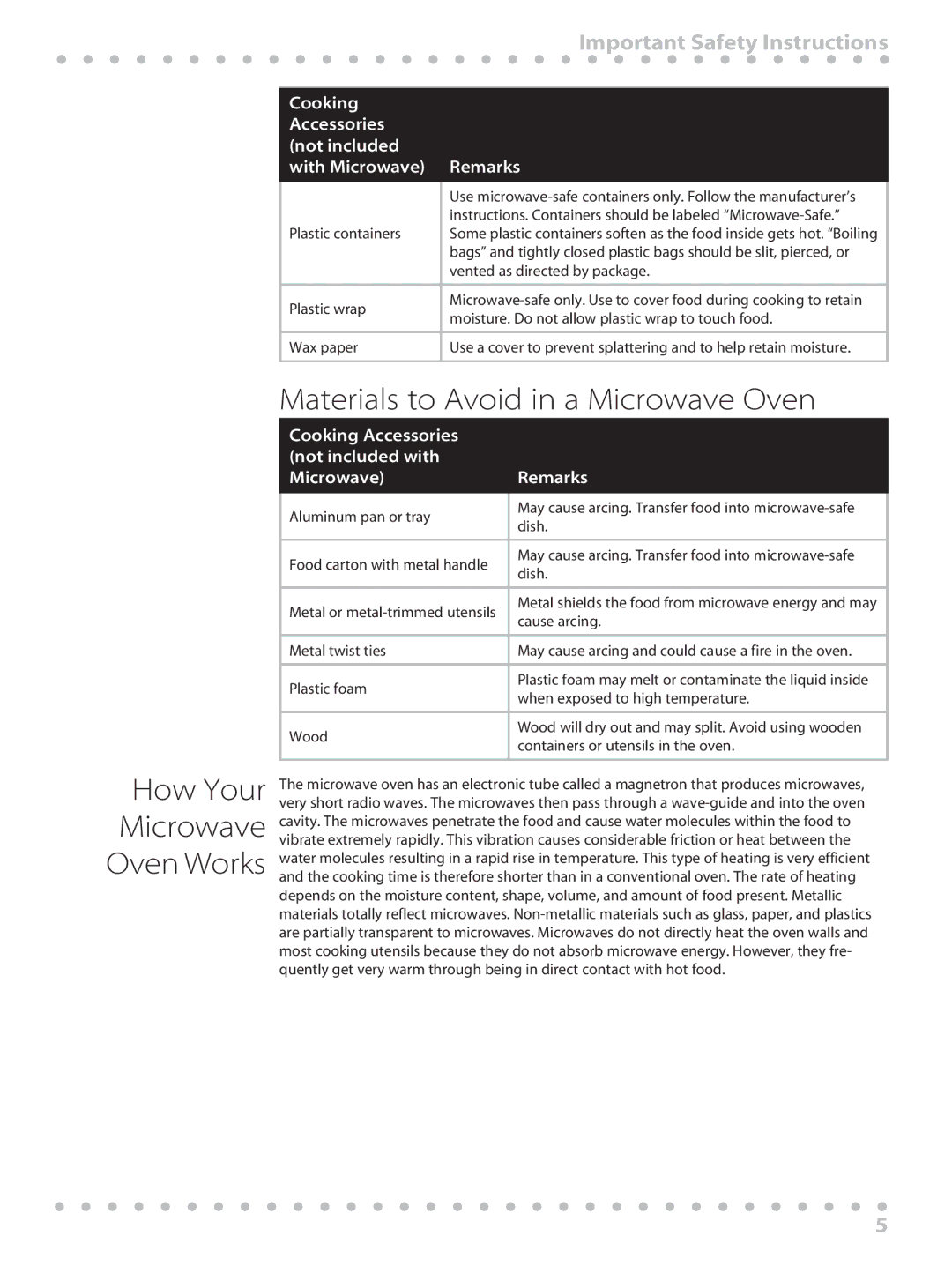
Important Safety Instructions
Cooking |
| |
Accessories |
| |
(not included |
| |
with Microwave) | Remarks | |
|
| |
| Use | |
| instructions. Containers should be labeled | |
Plastic containers | Some plastic containers soften as the food inside gets hot. “Boiling | |
| bags” and tightly closed plastic bags should be slit, pierced, or | |
| vented as directed by package. | |
|
| |
Plastic wrap | ||
moisture. Do not allow plastic wrap to touch food. | ||
| ||
|
| |
Wax paper | Use a cover to prevent splattering and to help retain moisture. | |
|
|
How Your
Microwave
Oven Works
Materials to Avoid in a Microwave Oven
Cooking Accessories |
| |
(not included with |
| |
Microwave) | Remarks | |
|
| |
Aluminum pan or tray | May cause arcing. Transfer food into | |
dish. | ||
| ||
|
| |
Food carton with metal handle | May cause arcing. Transfer food into | |
dish. | ||
| ||
|
| |
Metal or | Metal shields the food from microwave energy and may | |
cause arcing. | ||
| ||
|
| |
Metal twist ties | May cause arcing and could cause a fire in the oven. | |
|
| |
Plastic foam | Plastic foam may melt or contaminate the liquid inside | |
when exposed to high temperature. | ||
| ||
|
| |
Wood | Wood will dry out and may split. Avoid using wooden | |
containers or utensils in the oven. | ||
| ||
|
|
The microwave oven has an electronic tube called a magnetron that produces microwaves, very short radio waves. The microwaves then pass through a
5
